Having addressed their capital and regulatory issues, Western European banks turn to changing customer needs.
During 2016, serious doubts arose over the way in which some systemically important European banks—especially in Italy, Germany and to a lesser degree France—had failed to address problems going back to before the financial crisis. These doubts concerned their capital buffers, the internal valuation of impaired loans, and in some cases market manipulation and the improper selling of financial products that generated huge fines. All of this resulted in some banks’ shares going into freefall as questions arose about their future solvency. The crisis passed and most European banks are now looking much stronger, though their profitability has been curbed by ultralow or negative interest rates and the costs of complying with an ever tighter regulatory environment.
At the same time, fast-changing customer behavior and technology-based solutions have opened up opportunities for banks, like our regional winner, ING, that have been ahead of the curve in adopting digital technology to meet customers’ needs.
“To foster further growth and maintain our standing as a leading European bank, we strive to keep getting better every day,” says ING CEO Ralph Hamers. “Through the merger of two large banks in the Netherlands and the target operating model of our wholesale bank, we have gained experience in large transformational projects. I am convinced that our recently announced investment program and intention to converge toward a single digital-banking platform are necessary steps to enable ING to further improve the customer experience, further grow primary customers and lending, and increase efficiency.”
As a result, ING has attracted more than three million new customers since 2014 and last year enjoyed the top Net Promoter Score (NPS) in seven of its 13 retail markets. Success at the customer level has fed though to the bottom line, with ING reporting a net result of €4.7 billion ($5 billion) for 2016 driven by robust commercial growth at resilient margins and declining risk costs—all of this achieved despite increasing regulatory costs. ING adopted the right business model early on and is making it work.
Rated the most profitable bank in Europe for return on equity, Lloyds Bank is our pick for the United Kingdom—not bad for a bank that required a government bailout after the financial crisis and its shotgun marriage with battered HBOS. Group CEO António Horta-Osório attributes this to its being a “simple” and “low-risk” business, tightly focused on UK businesses and consumers. And during 2016, Lloyds duly delivered, with a 158% surge in pretax profit to £4.2 billion ($5.3 billion), earnings per share up by 263%, and its annual ordinary dividend raised by a further 13% over the year while UK-based peers either froze or cut their payouts. The bank is hugely cash generating, its branch network the UK’s largest, while it is the market leader in digital banking with more than 12.5 million active online users and more than 8 million mobile-banking customers using its highly rated Lloyds Bank app. With a pro forma common equity tier one ratio of 13.8% and a leverage ratio of 5%, sufficient capital buffers are in place if the post-Brexit UK economy comes off the boil.
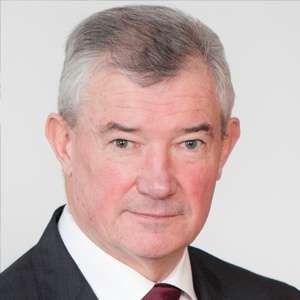
Brexit was bad news for Ireland, threatening free access to by far its largest trading partner. And it was especially bad news for Bank of Ireland, some 40% of whose balance sheet is based in the UK. The adverse impacts of weaker sterling put the skids under the bank’s UK retail, corporate and treasury, and group center, resulting in a €200 million drop in group pretax profit to just over €1 billion; but that was mitigated by its strong retail banking and life assurance in Ireland delivering a 20% improvement in underlying profit to €736 million. “Our business is performing in line with strategic objectives. All trading divisions are profitable,” CEO Richie Boucher comments in a press release: “We are maintaining strong organic generation of capital and our fully loaded CET1 ratio increased by 100 basis points during the year to 12.3%.”
Germany may be an economic powerhouse, but it remains seriously overbanked. The merger last August of two of Germany’s largest cooperative banks—Frankfurt-based DZ Bank and WGZ Bank of Düsseldorf—created our winner this year: the new DZ Bank, now the country’s third-largest bank by assets. The merger went through smoothly and has helped in the consolidation of a highly fragmented banking system. The combined entity now acts as a central clearing bank for the country’s more than 1,000 cooperative banks. Merger expenses of €247 million combined with lower net interest income, higher regulatory and banking levy costs, and a sharp increase in provisioning against loan losses (particularly in the troubled shipping sector) conspired to reduce net profit to €1.6 billion compared to nearly €1.8 billion in 2015. The volume of corporate banking business grew to €52.6 billion, while the joint credit business with cooperative banks expanded significantly. The merger helped strengthen the bank’s capital base, lifting its CET1 ratio from 13% in 2015 to 14.5% at the last year-end.
A cooperative-based bank likewise surpassed competitors to earn a win in neighboring Austria. BAWAG PSK has proved that adopting a simple, low-risk

business model and operating it efficiently works wonders: Fee and commission income was up by 3.8% over the past two years while operating expenses were cut by 6.6%, resulting in a 12.4% increase in pretax profit to €470.4 million. Retiring CEO Byron Haynes said that despite low interest rates and slow-growth European macro environment, the bank generated record earnings and outperformed all goals set for 2016, making it one of the best-capitalized banks across Europe. “We are in a position to capitalize on unique opportunities to grow our business, both organically and inorganically,” he said. This will be the job of new CEO Anas Abuzaakouk.
A consistent performer and the best capitalized of large French banks, Credit Mutuel Group, increased its net income by 7.7% in 2016 amid difficult market conditions and tighter interest margins. Net banking income rose by 3.1% to €16.8 billion, with improved performances from its retail networks, corporate and investment banking, asset management and private banking. New deals completed in 2016 included the purchase of General Electric’s leasing and factoring activities in France and Germany, the acquisition of Keytrade Bank—the leader in online banking and investment in Belgium—by Credit Mutuel Arkéa, and the acquisition of majority control of Targobank Spain. Pascal Durand, CEO of CNCM (Confederation Nationale du Credit Mutuel) comments, “The growth in earnings in 2016 testifies to the strong momentum of all the regional groups in a difficult environment; it also confirms the force conferred by belonging to the Credit Mutuel Group as a protective framework.” The group’s CET1 ratio of 15.7% was the strongest among major banks in France.
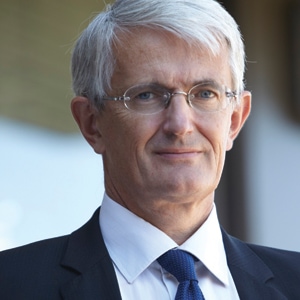
In the Netherlands, our winner, partially privatized ABN Amro Bank, was last summer on the receiving end of an unsolicited takeover attempt by Scandinavian banking giant Nordea; but the offer was firmly rebuffed by the Dutch government, which remains the majority shareholder. The attempted bid however underlines the attractions of bailed-out ABN Amro, which generates 80% of its operating income these days in the Netherlands. Underlying net profit for 2016 was up 8% at €2.1 billion; and the trend is ever upward, with the fourth-quarter result of €333 million showing a 23% year-on-year improvement. CEO Kees van Dijkhuizen notes that “we achieved loan growth in all our major loan books and were the number one provider of new mortgages in the Netherlands for the second consecutive year.” The bank’s capital buffers were further strengthened, its fully loaded CET1 ratio standing at 17% compared to 15.5% at the end of 2015.
Across the border, a lead in innovative technology coupled with another strong financial result made ING Belgium a winner this year. Underlying income was up, costs significantly down (cost-to-income ratio dropping from above 60% to 55.7%), leading to an increase in underlying profits before tax to €1.2 billion. Last year saw the launch of ING Fin Tech Village, the first Belgian accelerator dedicated to financial technologies, and support for the entrepreneurial start-up program iMinds. With new CEO Erik van den Eynden in place, expect the emphasis on technology to be maintained.
Scandinavian banks are also harnessing technology and streamlining their operations, with Nordea, our winner in Norway, leading the way. Low energy prices
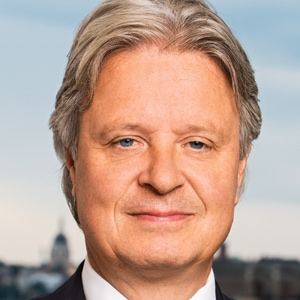
and overcapacity in shipping meant that Norway’s economy faced strong headwinds in 2016; and this, combined with ultralow interest rates, posed a major challenge to its banking industry. The country’s second largest bank, Nordea held up well by pushing ahead with its commitment to digitization and further reductions in staff costs. Nordea is in the midst of an internal transformation that as of last January saw its Scandinavian banking subsidiaries, including its bank in Norway, merge into a single entity. “A more straightforward legal structure better reflects the Nordic way we operate today,” explains group CEO Casper von Koskull. “At the same time, decisions will still be made close to the customer, as they have always been. A simpler structure reduces complexity and enables us to focus on delivering the best possible experience to customers.”
As market leader in retail banking in Sweden, with four million private customers out of a total population of 10 million and market shares above 20% in lending, deposit taking and fund management, Swedbank takes its corporate social responsibility seriously, with a strong emphasis on inclusiveness and sustainability. It is also consistently profitable, technologically innovative, and running a low-risk lending model—provided, that is, Sweden’s real estate bubble does not burst. Last year, Swedbank’s group net interest income rose to SKr23.7 billion ($2.6 billion). Commission income held steady and costs were carefully controlled, resulting in a SKr300 million bounce in pretax profits to SKr23.7 billion. During 2016, Swedbank’s acquisition of Danske Bank’s retail businesses in Latvia and Lithuania was approved, a new Internet Bank adapted for different platforms was launched, and a new Digital Banking unit formed. Earnings per share were up 24% to SKr17.50, and the bank’s CET1 capital ratio strengthened to 25% at the year-end.
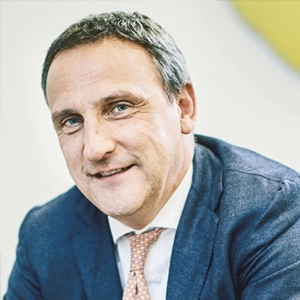
Denmark’s largest bank, Danske Bank, spearheaded another strong performance from this pan-Nordic financial group, which achieved a net profit of 19.9 billion kroner ($2.9 billion) last year—up from 17.7 billion kroner in 2015—and a return on equity up 1.5% to 13.1%. In Denmark, it grew market share of lending and deposits to 26.6% and 28.7% respectively. CEO Thomas F. Borgen comments that “the results reflect our diversified business model and our efforts to become a more customer-centric, simple and efficient bank,” adding that “we kept a high innovation pace and launched a number of new advisory products and easy-to-use solutions.” The bank’s overall CET1 capital adequacy ratio improved to 16.3%, and in February it completed a 9 billion kroner buyback.
In Finland, the market leader and our winner, OP Financial Group, raised its pretax earnings by 3.3% last year to €1.14 billion. New banking customers were up by 160,000, or 21% more than at the previous year-end, while the number of owner-customers increased by almost 260,000 to more than 1.7 million. Its home loan and corporate lending portfolios expanded by 4% and 3% respectively, while deposits were up by 6%. President and group executive chairman Reijo Karhinen pointed to “all-time-high earnings, excellent capital adequacy (the CET1 ratio was 20.1% at year-end) and above average market growth,” adding that “enabled by our good earnings performance, we have a real chance to promote the prosperity of our owner-customers.”
Iceland’s largest bank, Landsbankinn, did well at the operating level. Its market share in retail banking rose to a record 37.1%, with lending up by 5% and net interest income coming in 2.3 billion krónur ($20.8 million) stronger at 34.7 billion krónur. Net fee and commission income was 14% stronger due largely to increased activity in capital markets and asset management. But during 2016, the bank’s former CEO resigned following a share-trading scandal; and adverse rulings by Iceland’s Supreme Court on the bank’s recalculations of foreign currency index loans required a write-down of 5.5 billion krónur, resulting in a halving of net profit for the financial year 2016 to 16.6 billion krónur. Newly appointed CEO Lilja Björk Einarsdóttir took charge in March.
In Switzerland it was a difficult year for global banks like UBS with large wealth management and investment banking businesses. CEO Sergio Ermotti acknowledges that in 2016, “we saw persistent client risk aversion and substantial cross-border outflows”—particularly in Europe—that combined with a 34% decline in revenues from the investment bank for a slightly lower pretax profit of SFr5.4 billion ($5.4 billion) at the group level. But despite negative interest rates, the Swiss-based personal and corporate banking arm of UBS raised its profits by 4.3% to SFr1.75 billion. Ermotti points out these were its “best full-year results since 2008,” based on a 3.1% increase in personal banking business volume and the highest net new client acquisition on record. With cost-cutting across all divisions, UBS combined solid results (the final quarter generated pretax profits of SFr1.1 billion, a 47% improvement year-on-year) with a fully applied CET1 capital ratio of 13.8%.

Moving to other low-tax jurisdictions, the oldest multibusiness bank in the Grand Duchy of Luxembourg, Banque Internationale a Luxembourg (BIL), saw its retail business grow in 2016 despite an environment of negative interest rates, volatile markets and increasing regulatory pressure.
“We are reinforcing our position as a universal bank in our national market and are developing our private banking activities internationally,” says CEO Hugues Delcourt. BIL is aiming to grow local market share from its third position by offering clients innovative solutions; and it recently became the first bank in Luxembourg to offer fully mobile services, allowing clients to withdraw cash from ATMs with their smartphones and offering Touch ID.
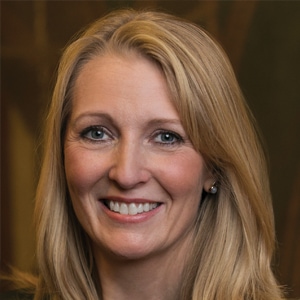
The oldest bank in the Principality of Liechtenstein, Liechtensteinische Landesbank (LLB), has in recent years focused on reducing costs and complexity in its operations and in 2016 was rewarded by an increase in net profits of 20.4% to SFr103.9 million. Under chairman Georg Wohlwend, this was achieved despite the creation of provisions for legal and litigation risks in an environment of increasing regulation. The bank’s ongoing strategic objectives include growing business volume above SFr70 billion from the current SFr58 billion through a combination of organic growth alongside targeted acquisitions in LLB’s home markets of Liechtenstein, Switzerland and Austria.
By a recent count, Monaco had 33 different banks within just over a square mile of its center—most of them single-branch private banks catering exclusively to the principality’s population of ultrarich tax exiles. These days that is also the main business of our winner, CFM Indosuez Wealth. But from its origins in 1922 CFM was a local bank, and it is still 30% owned by leading Monégasque families. With its seven branches serving ordinary customers, it is the largest local employer in financial services and is also Monaco’s leading commercial bank, servicing two out of three businesses in the Principality. CEO Gilles Martinengo comments, “One of our key achievements in 2016 [was] signing a referral agreement with HSBC Private Bank,” which will expand the client base.Under Andorra’s tighter regulations, Credit Andorra retained its leading position last year by placing a strong emphasis on transparency. “Against the backdrop of a financial sector undergoing restructuring,” says CEO Josep Peralba Duró, “operations were focused primarily on anticipating and adapting to the new regulatory environment.” While continuing its international expansion, Credit Andorra retains a proportionally larger exposure to the domestic economy than its peers. With a solvency ratio of 21.8% and liquidity of 65.1%, the bank’s balance sheet is strong and earnings generation remains good.
HSBC Malta is powering ahead with a 33% increase in pretax profit to €62.2 million. Net loans to customers and deposits were up while loan impairment charges were significantly down over the year. In a statement accompanying its annual report, the bank says, “All three main business lines: retail banking and wealth management, commercial banking, and global banking and markets, continued to be profitable in 2016.” Earnings per share rose by nearly a third and the net dividend by 45%, while capital buffers were strengthened.

Arguably the most efficient bank in Greece, Eurobank Ergasias, climbed back into profitability during 2016 with a near 40% improvement in preprovision income for the first three quarters compared to 2015, largely as a result of its market leadership in fee-generating businesses including asset management, equity brokerage and private banking. Net income after tax came in at €192 million as against a loss of more than €1 billion the previous year.
“International activities were once again a key driver of performance,” says CEO Fokion Karavias. “Both net interest income and fees improved, while operational cost decreased.” The bank’s exposure to eurosystem funding nearly halved over a year, and its CET1 ratio improved to 17.6%.
The Bank of Cyprus, by far the largest bank on the island, had to be bailed out during the Cypriot banking crisis and still faces legacy issues. It is honored for the much-improved look of current operations after aggressive cleanup last year. During 2016 the bank repaid outstanding emergency loans and recorded seven consecutive quarters of problem-loan improvement. Preprovision operating profits of €566 million were directed to derisk the balance sheet, leaving a modest €64 million profit after tax.
Italy’s most valuable bank and our clear winner in Italy, Intesa Sanpaolo, continued to build on its leading position in 2016 with a 13.6% increase in full-year profits to €3.1 billion. New lending to Italian households and businesses rose by 16% to €48 billion. The bank’s proactive approach to credit management helped reduce the inflow of new nonperforming loans, down 33% year-on-year to €5.8 billion, while overall its net stock of NPLs fell by 10% to levels well below the average for Italian banks. Concerns about overloading its capital base may have derailed a planned merger with insurer Generali to create Italy’s largest financial group. As it stands, the bank’s fully loaded CET1 ratio is 12.9% net of its proposed €3 billion dividend payment.
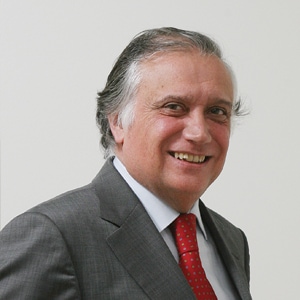
By far the most profitable and best capitalized bank in Portugal, Banco Santander Totta last year pushed through the integration of recently acquired Banif in just nine months. As a result, market share jumped from 12% to approximately 15%. CEO António Vieira Monteiro noted that the bank “increased its results by 36% in 2016, a result of high quality obtained with organic growth of our activity, focusing on balance sheet resources, mortgage loans and SMEs, which is reflected in the strong growth of net interest income, a growth in commissions and an increase in commercial revenue.” Digital customers grew by nearly a third, while in real terms costs were down 5%. The bank’s CET1 ratio stood at 15.7% after the acquisition of Banif, and return on equity for the year was 11.1%.
Spain’s leading retail bank, honoree CaixaBank, achieved near 30% market penetration of individual customers and raised pretax profits by more than 140% to €1.5 billion in 2016, largely thanks to lowering costs by paring back recurring expenses and to an 80% drop in loan loss provisions for insolvency risk. The loan book continued to improve, with impairments and other provisions down by 58%. CaixaBank’s innovative application of digital technology—its Linea Abierta website is a market leader—is now moving forward to big data as a tool for establishing closer ties with its customers. Its standing as one of the world’s most responsible banks was reflected in its improved rating on the Dow Jones Sustainability Index, which measures social, environmental and corporate governance criteria. The bank’s fully loaded CET1 ratio stood at 13.2% at year-end.
|
Best Banks In Western Europe 2017 |
|
|
REGIONAL WINNER |
ING |
|
Andorra |
Credit Andorra |
|
Austria |
BAWAG PSK |
|
Belgium |
ING Belgium |
|
Cyprus |
Bank of Cyprus |
|
Denmark |
Danske Bank |
|
Finland |
OP Financial Group |
|
France |
Credit Mutuel |
|
Germany |
DZ Bank |
|
Greece |
Eurobank Ergasias |
|
Iceland |
Landsbankinn |
|
Ireland |
Bank of Ireland |
|
Italy |
Intesa Sanpaolo |
|
Liechtenstein |
Liechtensteinische Landesbank |
|
Luxembourg |
Banque Internationale a Luxembourg |
|
Malta |
HSBC Malta |
|
Monaco |
CFM Indosuez Wealth |
|
Netherlands |
ABN Amro Bank |
|
Norway |
Nordea |
|
Portugal |
Banco Santander Totta |
|
Spain |
CaixaBank |
|
Sweden |
Swedbank |
|
Switzerland |
UBS |
|
United Kingdom |
Lloyds Bank |



